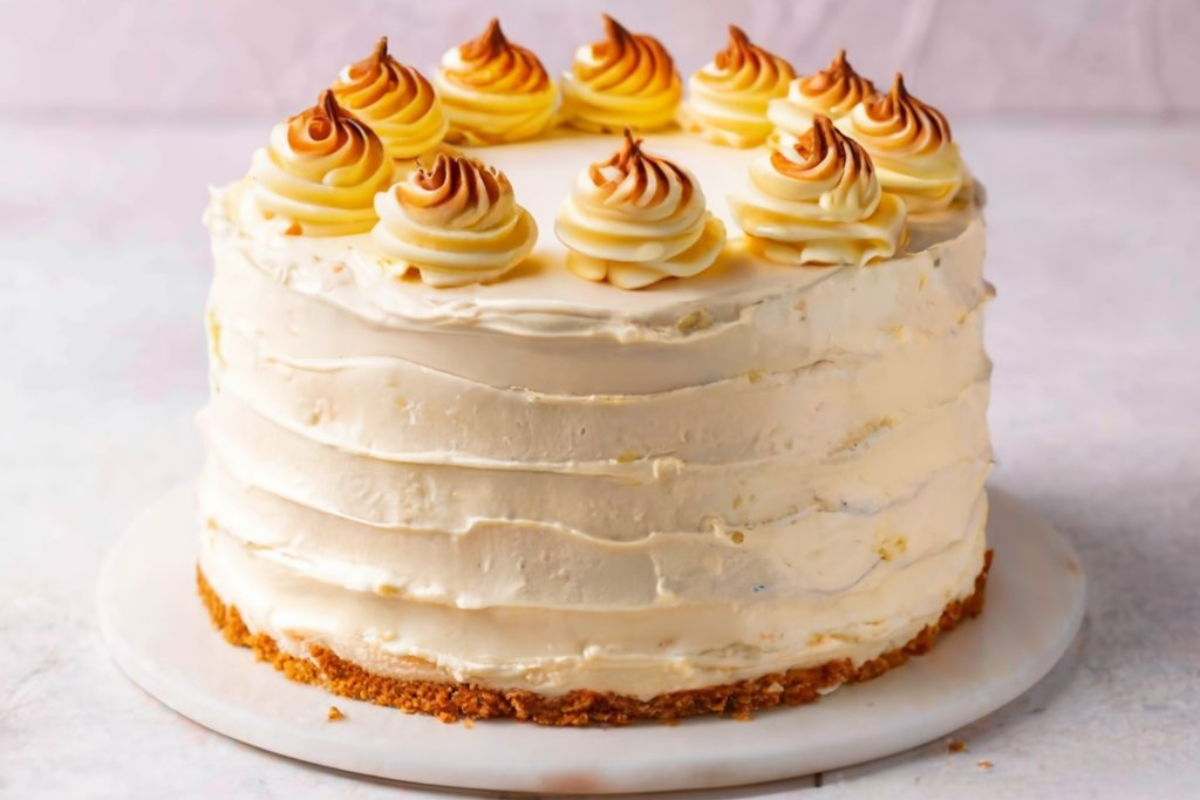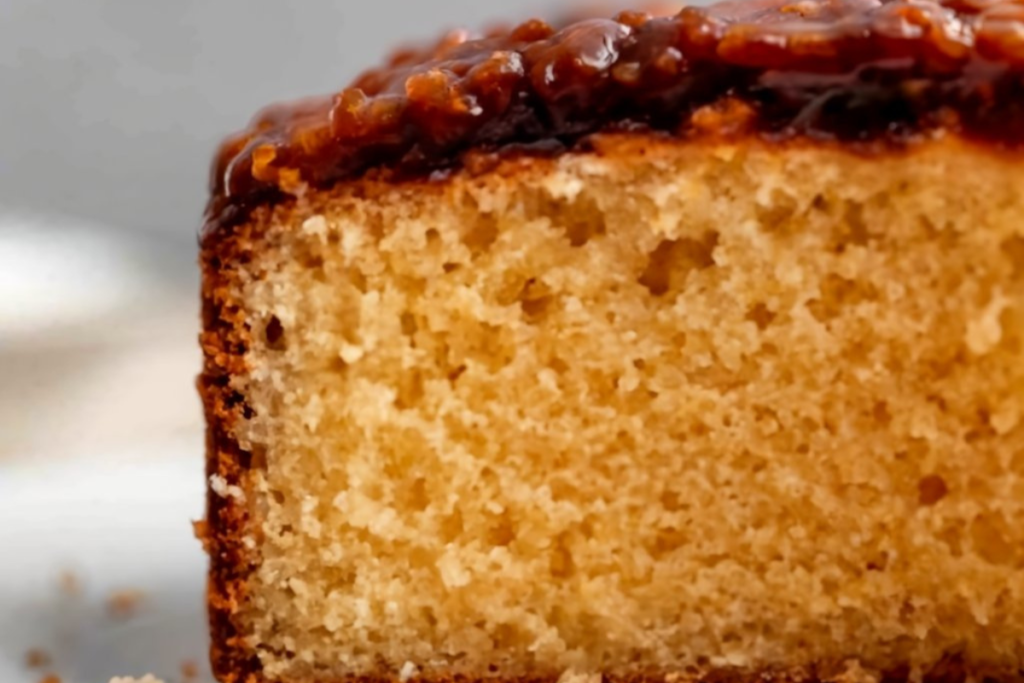Custard powder, often seen as the unsung hero in the world of baking, is a versatile ingredient that brings a unique charm to cakes. At its core, custard powder is:
- A dry mix, primarily made of cornflour.
- Enhanced with flavors like vanilla and a hint of egg essence.
- Known for its ability to thicken and enrich desserts.
This ingredient is more than just a convenience; it’s a transformative element in baking. It offers a delightful taste and a velvety texture, making it a favorite among bakers. Whether you’re whipping up a classic sponge cake or an innovative dessert, custard powder ensures a touch of richness and a hint of nostalgia.
In the realm of baking, custard powder has evolved from a simple egg substitute to a beloved ingredient. Its journey is a testament to its versatility and appeal in various baking cultures, particularly in the UK and Australia. For those interested in exploring more unique baking ingredients, check out our article on Easy Chicken Salad Chick Broccoli Salad Recipe.
Each component of custard powder, from the starch in the cornflour to the subtle flavors, works in harmony, ensuring cakes achieve the perfect balance of moisture and fluffiness. This blend makes cakes irresistibly soft and delicious, elevating them from ordinary to extraordinary.
Historical Background of Custard Powder
The story of custard powder is a fascinating chapter in the history of baking. It’s a tale of innovation and culinary evolution:
- Originated as a convenient alternative to traditional egg-based custard.
- Gained popularity for its ease of use and consistent results.
- Became a staple in British and Australian baking cultures.
Custard powder first made its appearance as a solution for those who wanted the creamy texture of custard without the fuss of using eggs. Its invention revolutionized home baking, offering a quick and reliable way to achieve the beloved custard flavor.
In the UK and Australia, custard powder quickly became a household name. Its versatility and unique taste made it an essential ingredient in many traditional and contemporary recipes.
This ingredient’s journey from a simple egg substitute to a key player in the baking world is a testament to its enduring appeal. Custard powder has not only simplified the baking process but also opened doors to creative possibilities in dessert making. Discover more about unique baking traditions in our Hearty Cowboy Soup Recipe.
Chemical Composition of Custard Powder
Custard powder isn’t just a random mixture; it’s a carefully crafted blend with each ingredient serving a specific purpose. Understanding its composition is key to appreciating its role in baking:
- Cornflour: The base ingredient, providing the thickening property.
- Flavorings: Typically vanilla, adding a classic custard aroma.
- Colorants: Often give the powder its characteristic yellow hue.
- Additional Elements: May include a hint of egg flavor and sweeteners.
Cornflour, the primary component, is responsible for the thickening effect custard powder has on liquids. This property is crucial in giving cakes and desserts a desirable consistency.
Flavorings, particularly vanilla, are essential in imparting the custard powder with its signature taste. These flavorings can vary, but vanilla remains a popular choice for its universally loved aroma and taste.
The colorants in custard powder play a visual role, giving desserts an appealing golden-yellow appearance reminiscent of traditional egg-based custard. This visual appeal is as important as the flavor in creating mouth-watering desserts.
In conclusion, the chemical composition of custard powder is a blend of practicality and sensory appeal, making it a favorite among bakers for both its functional and aesthetic contributions to baking.
Custard Powder vs. Traditional Custard
When it comes to custard in baking, there’s a notable distinction between using custard powder and traditional egg-based custard. Each has its unique characteristics and uses:
- Preparation Time: Custard powder offers quicker preparation compared to the more time-consuming traditional custard.
- Consistency and Texture: Traditional custard provides a richer, creamier texture, while custard powder ensures a more consistent and stable result.
- Flavor Profile: Egg-based custard has a natural, nuanced flavor, whereas custard powder imparts a uniform, often vanilla-dominated taste.
Custard powder, with its convenience and stability, is a go-to for many bakers. It eliminates the risk of curdling, a common issue with egg-based custard, and provides a reliable outcome every time.
On the other hand, traditional custard, made with eggs, milk, and sugar, brings a depth of flavor and richness that is hard to replicate. It’s preferred in recipes where the custard’s flavor and texture are the main attractions.
In summary, while custard powder is celebrated for its ease and consistency, traditional custard is revered for its rich flavor and creamy texture. The choice between the two often depends on the desired outcome of the recipe and the baker’s preference.
Benefits of Using Custard Powder in Cakes
Custard powder isn’t just a baking ingredient; it’s a game-changer in the world of cake-making. Its inclusion in recipes brings a host of benefits:
- Flavor Enhancement: Adds a delightful vanilla essence or a creamy taste, enriching the overall flavor of cakes.
- Improved Texture: Ensures a soft, moist crumb in cakes, making them more enjoyable to eat.
- Consistency in Baking: Offers predictable and uniform results, a boon for both amateur and professional bakers.
The flavor enhancement provided by custard powder is significant. It imparts a subtle yet distinct taste that can elevate a simple cake to a gourmet level.
Moreover, the texture of cakes is noticeably improved with the addition of custard powder. It helps in retaining moisture, ensuring that cakes don’t dry out and remain lusciously soft. This is particularly beneficial in sponge cakes and other light, airy bakes.
In conclusion, the benefits of using custard powder in cakes are manifold. From adding a unique flavor to ensuring a perfect texture, it’s an ingredient that can transform your baking. Whether you’re a novice or a seasoned baker, incorporating custard powder into your recipes is a step towards more delicious, consistent, and professional-quality cakes. For more on enhancing your baking, explore our guide to Taco Soup with Ranch Dressing, which discusses the impact of key ingredients.


